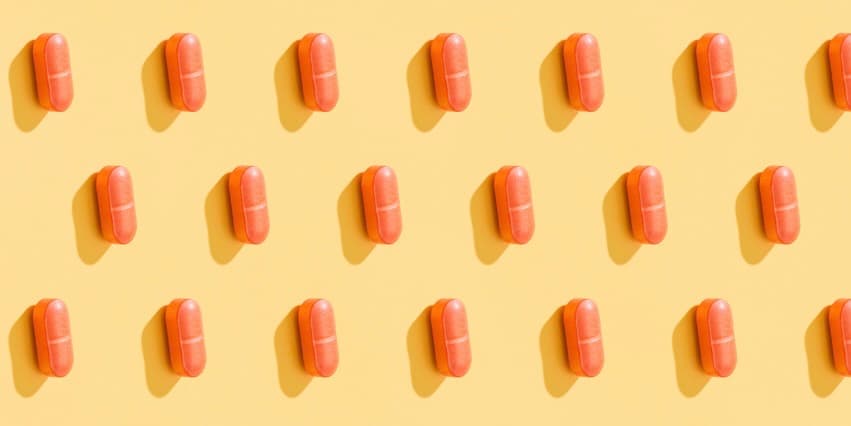
How to treat a UTI: all your questions answered

Key Points:
- Simple urinary tract infections (UTIs) are usually treated with antibiotics.
- Most people feel better a few days after starting antibiotics. Other medications can help with the pain and discomfort associated with UTIs.
- People with minor symptoms and no other health problems can reasonably try at-home treatments like cranberry juice or drinking extra fluids for a few days. However, if symptoms do not improve, or if you are pregnant, develop a fever, notice blood in your urine or if you are part of a high-risk group, you shouldn’t wait to talk to a healthcare provider about your symptoms. Without treatment, UTIs can cause serious problems.
A urinary tract infection (UTI) can cause painful urination (dysuria), frequent urination and irritating symptoms like cloudy urine or bloody urine.
If you’re experiencing any of these, you’re not alone!
UTIs are so common in the U.S. that 20% of all antibiotic prescriptions are for UTIs. Here’s what to know about prescription UTI treatments, over-the-counter options and when to see urgent care for UTI. Plus, how Dr. B can help you get antibiotics for UTI online with a virtual health assessment.
Signs your UTI is going away without antibiotics
Can a UTI go away without treatment? Yes! Around 1 in 3 infections get better without antibiotic UTI pills. But how long a UTI lasts can be dramatically cut down with some antibiotic help. And the research about effective alternative treatments for UTIs is still unclear.
So if you have UTI symptoms like burning with urination, frequent urination, cloudy or foul-smelling urine or pelvic pain, you should talk to a healthcare provider.
Complicated UTIs can cause serious problems (like bladder or kidney infections) for high-risk patients. People at higher risk for UTIs include those who are pregnant, older adults, and people with diabetes or other immune conditions that make it difficult for them to fight infections. If you are at high risk or if you develop a fever, chills or blood in the urine, talk to a primary care doctor or other health provider right away.
How do you treat a UTI?
Antibiotics are the first-line treatment for uncomplicated UTIs. Most people feel better in just 1-2 days after starting antibiotics. Signs your UTI is going away with antibiotic treatment include clear urine, no pain when urinating and urine that has no smell.
If UTI pain is severe, additional medications that can help reduce pain include Phenazopyridine (and its brand name, Pyridium) and over-the-counter Ibuprofen or Acetaminophen. These can help when figuring out how to sleep with UTI discomfort and make tips to the bathroom less likely. But these medications do not kill the bacteria that cause UTIs—so they’re not substitutes for antibiotics.
Depending on your health history and personal situation, other treatment options include:
- Long-term antibiotics: If you frequently get UTIs despite good hygiene practices, your provider may prescribe a low-dose antibiotic to take after sex—or every day.
- Estrogen therapy: Estrogen creams or suppositories can help treat UTIs in people who have gone through menopause.
- Severe UTIs: If you have a severe infection or an infection that has reached your kidneys, you may need to receive antibiotics through an IV in the hospital.
Which antibiotics are used for UTIs?
There are several different antibiotic pills for UTI. The best antibiotic for your UTI will depend on your health history, how often you get UTIs and how severe your infection is. Call your provider if you’re not feeling better within a few days of taking antibiotics or if your symptoms get worse after starting them.
Antibiotic options for UTIs include:
- Cephalexin is an antibiotic that treats many bacterial infections, including UTIs. It's often used by patients allergic to Penicillin.
- Trimethoprim and Sulfamethoxazole and its brand name versions, Bactrim and Bactrim DS, are combination antibiotics for UTI.
- Nitrofurantoin Monohydrate Macrocrystals and its brand name version, Macrobid, can help treat UTIs resistant to other bacteria and cystitis (a UTI infection in the bladder).
Antibiotics are prescribed so often for UTIs that some are becoming less effective. So it’s important to talk to your provider about your history of UTIs and antibiotic use.
Antibiotics can also affect bacteria in other parts of your body outside of the urinary tract, including the intestines and vagina. Some people develop gastrointestinal symptoms while taking antibiotics, such as diarrhea, nausea and vomiting. And 1 in 4 people who take antibiotics for a UTI then develop a yeast infection. If you need to treat UTI and a yeast infection at the same time, Dr. B is here for you!
How to prevent UTI
Have you ever thought, “I feel a UTI coming on—can I stop it?” Antibiotics are often the best way to treat active urinary tract infections. But the following habits can help your body flush out bacteria and prevent a UTI.
- Drink plenty of fluids—especially water—to help your body urinate frequently.
- Wipe from front to back after using the bathroom. This helps keep bacteria from the anus and vagina away from the urethra.
- Pee after sex.
- Avoid products that can irritate the urinary system, including douches and deodorant sprays.
- Spermicides and diaphragms are linked to greater chance of developing UTIs. So consider other forms of birth control if necessary.
How to get UTI antibiotics online
When you feel the burning pain of a UTI, you want to get UTI antibiotics online the same day. Dr. B’s hassle-free health platform can help! Start an online assessment, sharing your health history and current symptoms. A licensed provider will review your assessment and, if appropriate, recommend a prescription treatment.
You can get UTI treatment online with insurance or without insurance. So if you are curious about getting UTI treatments like Macrobid, Bactrim or Cephalexin online, start a virtual health assessment today!
Sources:
American Society of Health-System Pharmacists, Inc. (2022). Phenazopyridine.
Bergamin, P. A., et al. (2017). Non-surgical management of recurrent urinary tract infections in women. Translational Andrology and Urology.
Foxman, B., et al. (2013). Alternative approaches to conventional treatment of acute uncomplicated urinary tract infection in women. Current Infectious Disease Reports.
Hisano, M., et al. (2012). Cranberries and lower urinary tract infection prevention. Clinics.
Imam, T. H. (2022). Bladder infection. Merck Manual Commercial Version.
Imam, T. H. (2022). Kidney infection. Merck Manual Commercial Version.
Imam, T. H. (2022). Overview of urinary tract infections. Merck Manual Commercial Version.
Imam, T. H. (2022). Urethritis. Merck Manual Commercial Version.
Medina, M., et al. (2019). An introduction to the epidemiology and burden of urinary tract infections. Therapeutic Advances in Urology.
Plüddemann, A. (2019). Can drinking more water prevent urinary tract infections? The evidence says yes. BMJ Evidence-Based Medicine.
The American College of Obstetricians and Gynecologists. Urinary tract infections (UTIs).
Zhang, Y., et al. (2020). Efficacy of nonsteroidal anti-inflammatory drugs for treatment of uncomplicated lower urinary tract infections in women: A meta-analysis. Infectious Microbes & Diseases.
Sign up for the free Dr. B newsletter for a weekly report on the latest in healthcare + research-based advice for staying healthy and mentally well.





